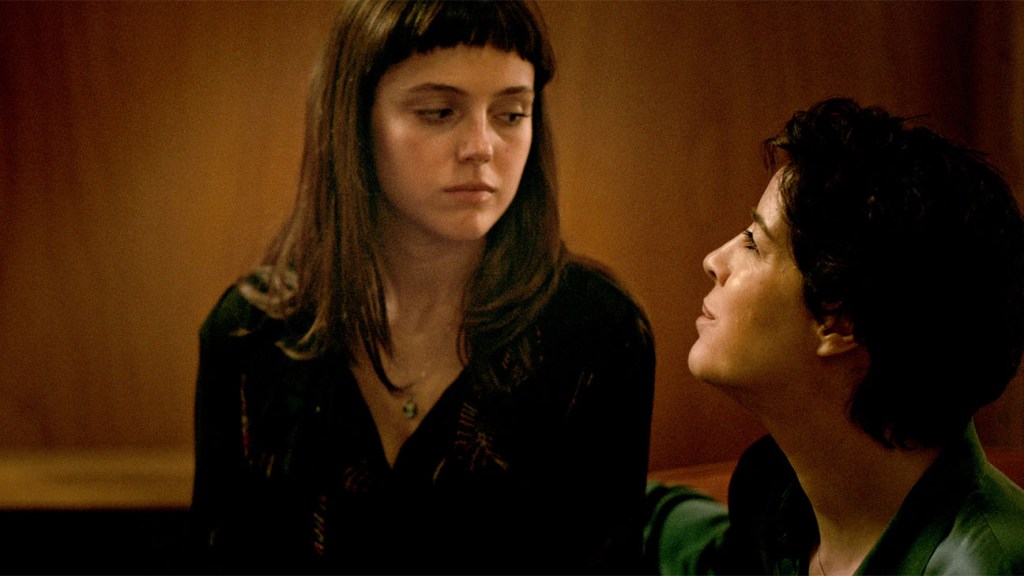The Portuguese director is something of an enigma. Since his first feature film in 1988, and collaborations with some of the biggest names in European cinema, it has taken until now for João Canijo to be fully recognized. Toni Junyent looks at the 36th Panorama entry Bad Living (Mal Viver) to critique the director, and regrets its companion film not being shown.
“Burn, Hollywood, burn”, says the writing on the profusely graffiti-filled walls of Exarcheia, Athens’ lively and resilient anarchist neighborhood. Not far from there, at the Elli Cinema, was the International Competition section of the 36th Panorama of European Cinema, a festival whose concerns are actually far away from that already vanished idea of Hollywood. Among a selection comprised mostly of debuts or filmmakers, who have made one or two films, there was Bad Living (Mal Viver, 2023), by the Portuguese director João Canijo, a long-distance runner who made his first feature film in 1988, and who has collaborated with some of the biggest names of European cinema, such as Alain Tanner, Oliver Assayas, and Manoel de Oliveira. Somehow, Canijo has not gained the cinephile recognition accomplished by fellow compatriots like Pedro Costa, Miguel Gomes or Rita Azevedo; in 2011, his charged melodrama Blood of My Blood (Sangue do meu sangue) got some enthusiastic reviews and won a few awards at San Sebastian. However, since then, Canijo has kept working without actually being noticed, until now.
This time the project was stimulating, to say the least: he shot two parallel films, Bad Living and Living Bad (Viver Mal, 2023, already reviewed for the FIPRESCI website by Diana Martirosyan at the time of its premiere in Berlin). Both films deal with a family resort that has seen better days: the film shown at Panorama focuses on the people who run the hotel, while the other tells three stories centered on some of their guests. The two films take place at the same time and eventually we’ll see some events from different points of view. It would have been desirable to be able to watch both films at the festival, or at least tell the audience about their complementary nature, but in any case Bad Living made for an intense viewing experience. Many of the films screened at the competition moved at a gentler tone or were more dialogue-driven, while in Canijo’s film we become gradually enclosed in a domestic hell where words are sparse and, when they’re uttered, they come full of grief and resentment. Though not Hollywood, what burns in Bad Living are the paths of empathy and communication between Piedade (Anabela Moreira) and the women of her family. More than burnt, their communication is reduced to ashes.
It is, above all, a film where we feel the weight of space. Its opening long-shot sets the somber observation procedure, establishing also a class subtlety: Piedade lays on a sun bed, holding her dog, possibly the only living being that still puts up with her, while her worker Angela is doing some maintenance in the swimming pool. The not-so-idyllic scene is disturbed by the arrival of Piedade’s mother and sister, who bring her daughter Salomé (Madalena Almeida), just after the death of her father. Salomé’s unfulfilled need for motherly solace impregnates the rooms, quietly framed by Leonor Teles, whose superb photography in dark reds can make us think in blood thickening inside these condemned bodies. Teles often sets the shots from behind windows or isolates the characters in a corner, accentuating their inability to escape. Bad Living may remind us of Lucrecia Martel’s poignant portraits of the decaying bourgeoisie, but the strong sense of stasis that permeates its rotting narrative brings it somewhat closer to a certain cinema of the void: perhaps watching it late at night after spending most of the day walking the streets of Athens up and down affected me, but there were moments when I felt submerged in a strange wait, much alike when you expect the marvel to appear in Apichatpong Weerasethakul movies. Only that neither marvel nor redemption will show up in this film.
Others, who are better informed, may dig deeper into the João Canijo case. Bad Living won the Silver Bear at Berlin, and perhaps the singularity of this diptych will refresh the interest in his cinema. He keeps switching between fiction and documentary, accompanied often by the same troupe of committed actresses; in fact, Bad Living’s screenplay was written by Canijo in collaboration with them (Living Bad, its complementary film, is however based on three short stories by August Strindberg). “Love is agony”, says Piedade in Bad Living, not exactly celebrating the energy that love consumes but recognizing her defeat in trying to be at ease with her relatives. In any case, it’s hypnotic to watch her struggle, even though Canijo doesn’t give us much hope for her daughter Salomé, whose limpid and softly lit face deserves breathing purer air.
Toni Junyent
Edited by Steven Yates
© FIPRESCI 2023

